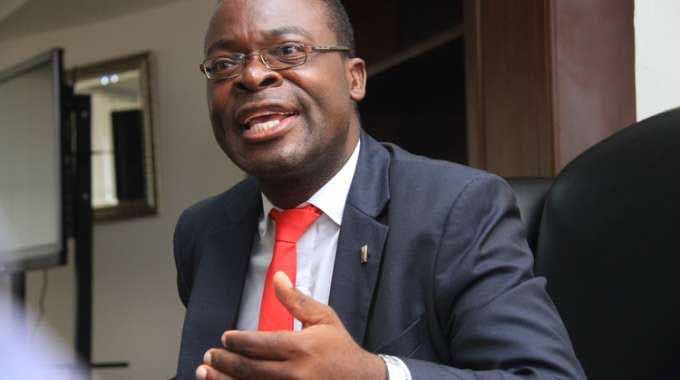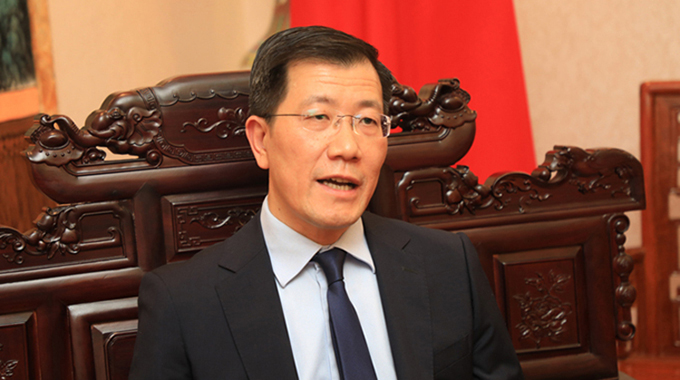‘MTB strategic in critical skills’

Mukudzei Chingwere
Interview
Recently, President Mnangagwa launched the new Management Training Bureau (MTB) in Harare. Minister of Higher and Tertiary Education, Innovation, Science and Technology Development Professor Amon Murwira (Prof AM) spoke to our reporter Mukudzei Chingwere (MC) about the MTB, the latest shape of the country’s education system, which is being configured to give the country the capability of achieving vision 2030. Below are excerpts of the interview.
MC: President Mnangagwa recently launched the new MTB. Can you tell us more about it and how it is expected to operate?
Prof AM: The Ministry of Tertiary Education, Innovation, Science and Technology Development has strategically repositioned one of its agencies, the Management Training Bureau (MTB) as a National Strategic Institution in the provision of national capabilities in critical skills shortage areas.
It has since been transformed into a 21st century entrepreneurship incubation centre with the best aptitude enhancing the 3 Ls of this century i.e. Learning, Literacy, in Technology and Lifelong Skills. MTB has been reconfigured through the establishment of three key pillars of management training that are aligned to the Ministry’s programmes, (1) international business language and diplomacy, (2) Business strategy, leadership and entrepreneurship development and (3) Information Communication Technology; innovation management and business research.
MTB’s training and conferencing facilities have been upgraded to align it with the expectations of Education 5.0. i.e. (1) Teaching, (2) Research, (3) Innovation, (4) Industrialisation and (5) Community service. In this regard, modern training standards have since been adopted by repairing, modernising and equipping, the institution’s physical infrastructure and training equipment in the least possible time, in order to meet the strategic objectives. MTB now provides a conducive learning, living and conferencing environment.
MC: Minister, the President has given direction of achieving an upper middle-income society by 2030. What role are you playing as the education sector to make this a reality?
Prof AM: A nation is developed intentionally. The President gives a direction of what needs to be done and we teach it at our institutions. A nation is built intentionally, not by accident. Once a nation is able to implement its own programmes, you cannot stop that nation. The MTB you see today should deliver lifelong learning.
MC: You said MTB is now giving lifelong learning, and is the only institution doing that. Can you explain further?
Prof AM: The President gives you the national strategic intention. In this case, Vision 2030 of an upper middle-income economy, is what we call a national strategic intention, and it is Presidential. It is given by the President. As a ministry or a sector, we have to give that strategy a capability. Being capable of moving the nation to this vision. Below that there is a team of institutions which are configured to make sure that vision is possible. The model is vision — capability — configuration. So, when those three levels are in place, then the debate about Zimbabwe’s development and the approach of the President becomes very clear.
MC: Why did you replace the education 3.0 with the education 5.0?
Prof AM: Education is the best predictor of whether the country is going to develop or not, because no nation can develop faster than the development of its education system. So when his Excellency the President came in, one of the first things he emphasised was that our education has to produce goods and services or teach people to produce goods and services. It meant we had to rethink the way we deliver our higher and tertiary education system. The then higher education system was mainly concentrated on teaching a bit of research and workshops, which we called education 3.0. In terms of literacy this kind of education brought us to over 94 percent, the question then was “We are very literate, but why are we importing this and that?” The President then realised that the first foundational stage of our education we have done very well in terms of literacy. But our skills level is at 38 percent, which means our skills deficit are on average 62 percent.
MC: What are some of the changes that were done to transform our education structure from 3.0 to 5.0?
Prof AM: We had to look at the re-configuration of our education. We have industrial training colleges, we have polytechnics, we have teachers’ colleges, we have universities. We then transformed our approach to say if we need to produce goods and services then it means we need additional terms of references, which were innovation and industrialisation. So, innovation and industrialisation make an institution have five terms of references, that is teaching, research, community engagement, innovation and industrialisation.
This is education 5.0, but for education 5.0 to work well, we had to look at infrastructure. First of all, it is the programme infrastructure, promotions infrastructure, physical infrastructure, financial infrastructure.
MC: Why was MTB not delivering its mandate all along?
Prof AM: In terms of programme infrastructure, MTB was given effect to by the Manpower Development Act of 1984, but since 1984 MTB did not have any regulations as to how it should operate. There was no deliberate attempt to give it clear directions and clear guidelines. His Excellency the President said we should now give it clear guidelines, so we had a structural instrument that we did to give it legal effect. This is structural instrument 78 of 2020, which is giving it a programme infrastructure and clear mandate.
MC: Who has transformed MTB to where it is now?
Prof AM: It has become very clear to us as Zimbabweans that the way education is designed projects the socio-economic trajectory of any nation. This has always been the case since creation. Simply, stated it means “what you learn to become is what you become and that what you do not learn to become, you do not become”. Taking this as a basis, it becomes clear to us that it is our responsibility to design a national education system that gets us out of hunger, poverty and danger, and that puts us on the path to prosperity and confidence.
MC: What role does MTB play in developing the national strategic intention?
Prof AM: The President set and pronounced for us our national strategic intent, which is to become or exceed an upper middle-income economy by 2030 though the modernisation and industrialisation of our nation; through hard and honest work and through applying our capabilities that we acquire daily. Our work is cut out now to develop the capability through a manpower configuration that leads to the realisation of that national strategic intent. This modernisation thrust exemplified by the MTB is a modest contribution in this regard apprentices formed the bulk of the work at MTB. The President reviewed the apprenticeship programme after more than 10 years of dormancy. Your (President’s) accomplishments are there for all to see. Your apprentices (MTB apprentice) have done you proud.
MC: What are some of these accomplishments?
Prof AM: The University of Zimbabwe (UZ) have filed for more than 100 patents, Harare Institute of Technology (HIT) has filed for more than 30 patents, Midlands State University (MSU) has patents, including patents of making new roads. So, you can see the energy within our people. For example, the way the roads are going to be made in this country will not be the same again. We are giving these institutions money to start these projects.
MC: What can other stakeholders do to make this intention a success?
Prof AM: The President projected that Zimbabwe shall be built stone upon stone — from the little to plenty — that’s the philosophy of building a great nation; the ant, masvosve or majuru building philosophy. We always get plenty from little contributions by many, given focused and concentrated minds!
MC: In conclusion, what are your views on the President’s vision?
Prof AM: The President can be understood by just taking time to consider these following few words: Time moves at an equal speed for everyone — for those sleeping and snoring, for those whimpering and complaining and for those working and sweating. The difference between these groups is that those working, and sweating accomplish more in a short time. To those who have the gift of deep thinking, it symbolises a seismic philosophical shift in statecraft-mental shift and its extremely liberating.









Comments